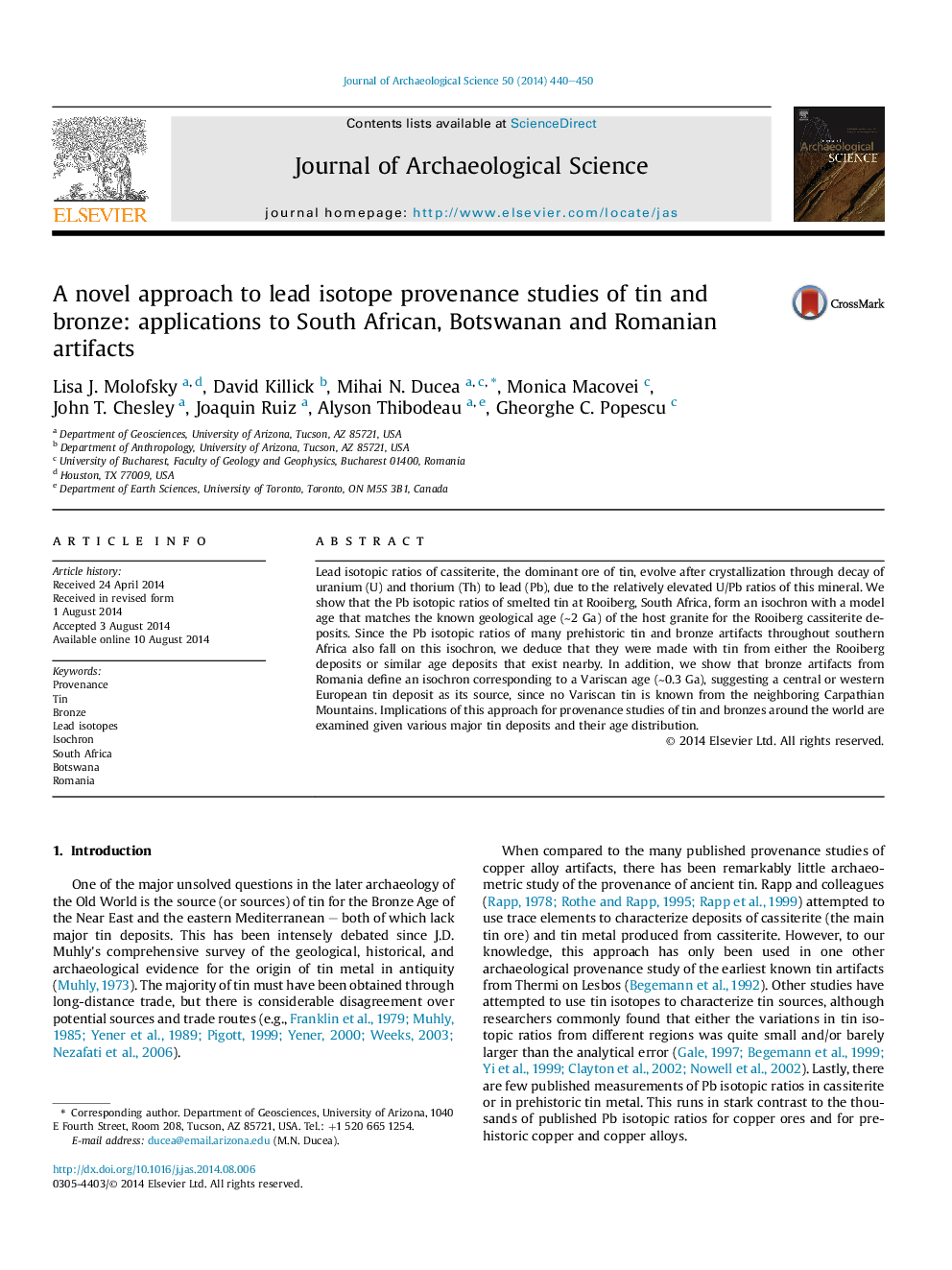| کد مقاله | کد نشریه | سال انتشار | مقاله انگلیسی | نسخه تمام متن |
|---|---|---|---|---|
| 7443051 | 1483910 | 2014 | 11 صفحه PDF | دانلود رایگان |
عنوان انگلیسی مقاله ISI
A novel approach to lead isotope provenance studies of tin and bronze: applications to South African, Botswanan and Romanian artifacts
ترجمه فارسی عنوان
یک رویکرد جدید برای مطالعه پروتئین ایزوتوپ قلع و برنز: کاربردی برای آثار آفریقایی آفریقایی، بوتسوانان و رومانیایی
دانلود مقاله + سفارش ترجمه
دانلود مقاله ISI انگلیسی
رایگان برای ایرانیان
کلمات کلیدی
موضوعات مرتبط
مهندسی و علوم پایه
مهندسی مواد
دانش مواد (عمومی)
چکیده انگلیسی
Lead isotopic ratios of cassiterite, the dominant ore of tin, evolve after crystallization through decay of uranium (U) and thorium (Th) to lead (Pb), due to the relatively elevated U/Pb ratios of this mineral. We show that the Pb isotopic ratios of smelted tin at Rooiberg, South Africa, form an isochron with a model age that matches the known geological age (â¼2Â Ga) of the host granite for the Rooiberg cassiterite deposits. Since the Pb isotopic ratios of many prehistoric tin and bronze artifacts throughout southern Africa also fall on this isochron, we deduce that they were made with tin from either the Rooiberg deposits or similar age deposits that exist nearby. In addition, we show that bronze artifacts from Romania define an isochron corresponding to a Variscan age (â¼0.3Â Ga), suggesting a central or western European tin deposit as its source, since no Variscan tin is known from the neighboring Carpathian Mountains. Implications of this approach for provenance studies of tin and bronzes around the world are examined given various major tin deposits and their age distribution.
ناشر
Database: Elsevier - ScienceDirect (ساینس دایرکت)
Journal: Journal of Archaeological Science - Volume 50, October 2014, Pages 440-450
Journal: Journal of Archaeological Science - Volume 50, October 2014, Pages 440-450
نویسندگان
Lisa J. Molofsky, David Killick, Mihai N. Ducea, Monica Macovei, John T. Chesley, Joaquin Ruiz, Alyson Thibodeau, Gheorghe C. Popescu,
